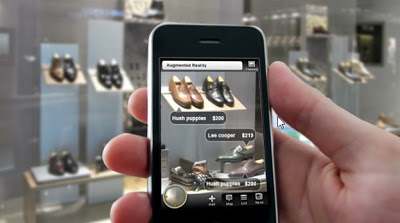New technologies such as RFID, NFC, augmented reality and gamefied retail apps will directly interact with consumers based on predictive behaviors identified by "Big Data". - Tony D'Onofrio
behaviors identified by "Big Data". - Tony D'Onofrio
This month RIS News published a great post on 12 key takeaways from a recent Onmichannel Merchandising Symposium.
From the original dozen, the top 5 favorites include:
- "The customer is already omnichannel, or is moving to it. They are using all the resources at their disposal to improve their shopping journey. The retailer's job is to maximize our performance based on how we know their shopping journey has changed." – Leslie Hand, research director, IDC Retail Insights
- "The retailers' job today is to make the customer feel as if their brand, strategy, etc. is all personalized for them, which can be accomplished with a move toward customer segmentation – and to accomplish this without mountains of inventory, which makes the retailer's CFO happier." – Terry Donofrio, president, Retail Systems & Services
- "Companies with true omnichannel in place have both visibility and use of their inventory across all their channels, and can fulfill a customer's needs from any channel." – Frank Zarrello, planning specialist with Retail Systems & Services
- "Analytics should tell you not just what happened but why it happened." – Donofrio
- "Customers have all the power. Before this retailers would lead customers, now it's the customers that are leading the retailers. Retailers need to respond by strategically putting the customer in the middle and making them the center of gravity." – Zarrello
The 12 key Onmichannel Symposium takeaways were a great reminder of the three major technology waves that have transformed the retail industry over the last 50 years.
- 1960's - The industrial expansion post World War II led to very efficient manufacturing processes. Progressive manufacturers of consumer products invested in new technologies to optimize their distribution channels including an expanded set of data metrics on product sales performance. Manufacturers used this data to optimize the product assortment that would be accepted by both the retailer and the consumers. Up to the late 1960's, the key data metrics driving store behaviors were in the hands of the manufacturers.
- 1970's - On June 26, 1974, the first UPC bar code was scanned on a package of Wrigley's chewing gum at a Marsh supermarket in Troy, Ohio in the United States. This $0.67 USD consumer item kicked off the second transformational wave for the retail industry. As scanning became ubiquitous, retailers now had their own data metrics to drive their own store planograms. The power shifted to the retailer.
- 2000's - In November 1992 the third major wave of retail technology transformation kicked off with the IBM release of the first smartphone, a cellular PDA (Personal Digital Assistant) device called Simon. From humble beginnings, the smartphone is now the new battlefront for the mindshare of the consumer. According to Gartner, 154 million smartphones were sold worldwide in 2012, growing 43% from the previous year. (2) Through all these smartphone devices, the power of information gathering / retail shopping choices is now shifting to the consumer.
Of the top 5 favorite takeaways from the Omnichannel Symposium, Number 5 reflects very accurately the state of retail today as it is being transformed by mobile computing technology.
"Customers have all the power. Before this retailers would lead customers, now it's the customers that are leading the retailers. Retailers need to respond by strategically putting the customer in the middle and making them the center of gravity." – Zarrello
Knowledge shifts based on technology improvements have transformed retail over the last 50 years. The pace of change is accelerating and windows to react are shrinking. Around the corner is the "4th Generation Retail Technology Wave" which will be about solutions that drive a more immersive customer shopping experience. New technologies such as RFID, NFC, augmented reality and gamefied retail apps will directly interact with consumers based on predictive behaviors identified by "Big Data". Shopping will become more personal as consumers connect and interact with a multi-sensored store. The interaction will increasingly be visual (through interactive digital panels) and social with the shopper's own inner circle of shopping advisors. The physical store will be the location for the multi-sensored positive customer experience that will lead to expanded opportunities to sell more products through growing sets of omni shopping channels.
Catch the 4th retail technology wave to improved store profitability and performance.
Image from http://ow.ly/kA5gW
















